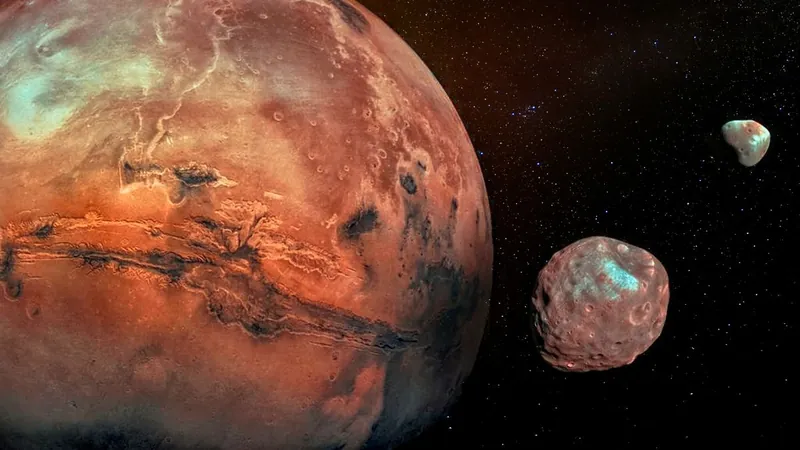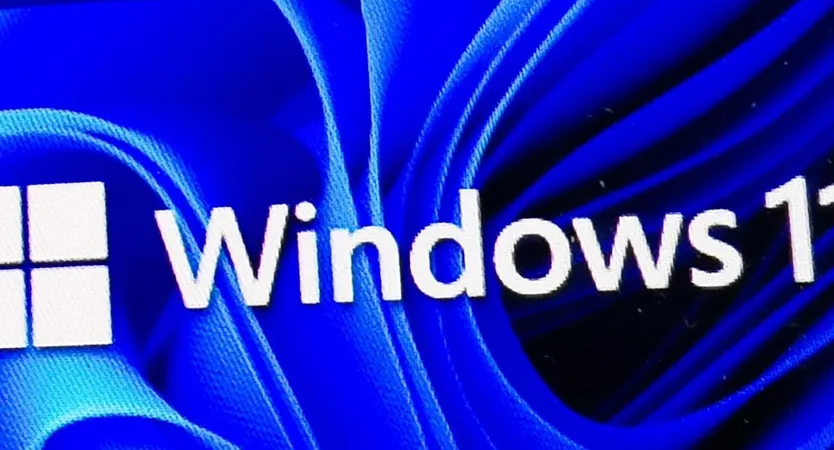
Unraveling the Mystery: Did Mars Destroy an Asteroid to Create Its Moons?
2024-12-09
Author: Charlotte
How Mars Gained Its Moons
Led by Jacob Kegerreis from NASA’s Ames Research Center, a team of scientists employed advanced computer simulations to delve into the hypothesis that a close-passing asteroid could have provided the building blocks for Mars's moons. By modeling various scenarios, they examined how fragments from an asteroid might be captured in Mars's orbit after being shattered.
According to their findings, while some fragments would escape Mars's gravity, others would remain bound to the planet. Over time, these fragments could collide and coalesce, forming a disk of debris around Mars. This debris would eventually gather together to create the two moons we see today.
Using a simulation code known as SWIFT, researchers could explore countless variations—adjusting the asteroid's size, spin, velocity, and proximity to Mars during its closest approach. Remarkably, the team discovered that many of these simulations produced sufficient debris to potentially form the moons.
Kegerreis expressed enthusiasm about this novel approach, emphasizing how it opens new avenues for understanding Phobos and Deimos. “It’s exciting to explore a new option for the making of Phobos and Deimos—the only moons in our Solar System that orbit a rocky planet besides Earth’s,” he stated. This new model also brings forth different predictions regarding the moons' properties, which could be verified against existing theories.
Diverse Theories on Moon Formation
This study adds depth to two primary theories about how Mars's moons were created. The first suggests that the moons were entirely captured whole by Mars's gravity, supported by their asteroid-like appearance. The alternative theory proposes that a massive object collided with Mars, ejecting debris that eventually formed the moons—a concept akin to our own Moon's origin.
However, the impact theory seems to better explain the current orbits of Phobos and Deimos, which are nearly circular and aligned with Mars's equator. Interestingly, the current distance of the moons from Mars raises questions on whether they could have been formed from ejected material, typically expected to remain closer to the planet.
By proposing a model that enables a more efficient spread of moon-creating materials into the disk's outer regions, co-author Jack Lissauer points out that a smaller parent asteroid could still provide enough material to form the moons.
Looking to the Future
The quest to uncover the origins of Mars's moons is set to gain traction with the upcoming Martian Moons eXploration (MMX) mission, spearheaded by the Japan Aerospace Exploration Agency (JAXA). This ambitious endeavor aims to collect samples from Phobos, potentially unlocking the secrets of their formation and providing clarity in this longstanding cosmic mystery.
The revelations surrounding Mars's moons not only excite astronomers but could reshape our understanding of planetary formation processes in our Solar System. Stay tuned as we await further findings that could change everything we thought we knew about the Red Planet and its companions!









 Brasil (PT)
Brasil (PT)
 Canada (EN)
Canada (EN)
 Chile (ES)
Chile (ES)
 España (ES)
España (ES)
 France (FR)
France (FR)
 Hong Kong (EN)
Hong Kong (EN)
 Italia (IT)
Italia (IT)
 日本 (JA)
日本 (JA)
 Magyarország (HU)
Magyarország (HU)
 Norge (NO)
Norge (NO)
 Polska (PL)
Polska (PL)
 Schweiz (DE)
Schweiz (DE)
 Singapore (EN)
Singapore (EN)
 Sverige (SV)
Sverige (SV)
 Suomi (FI)
Suomi (FI)
 Türkiye (TR)
Türkiye (TR)